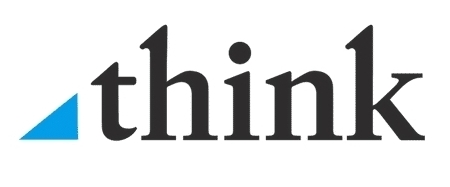
Authors:
Patrick J. Kelly, Ph.D., is Counsel and a member of Stradley Ronon’s intellectual property group. He can be reached at patrick.kelly@stradley.com or 610.640.5804.
James R. Major, D.Phil., is an Associate and a member of Stradley Ronon’s intellectual property group. He can be reached at jmajor@stradley.com or 212.404.0628.
Read the first installment of our intellectual property series, here.
Question: How should you manage research and development at a startup company?
Answer: Educate and record. It is critical that inventors and executives understand the basics of patent law. Perhaps the most important concept is that unrestricted disclosure of an invention, such as at a seminar open to the public, can result in the complete loss of rights in the invention. Another is that employment agreements should contain an obligation to assign any inventions conceived. Additionally, you should use invention disclosure forms to record the basics of the invention. These need not be complicated but should set forth, for example, a summary of the invention, possible inventors, any relevant disclosures by you or others, and a date as to when the invention will be publicly disclosed. While information disclosure forms should be kept confidential, they may be subject to disclosure requirements in litigation.
Question: How do I know whether to file a patent?
Answer: Establish an invention screening committee to review new inventions to decide if it is advisable to pursue patent protection. Questions to consider include whether: (i) the invention helps the business or hinders a competitor; (ii) the product or service embodying the invention has a market; and (iii) a competitor can design around any patent. Engage a patent attorney with experience in the relevant field if you wish to proceed with patent protection. While you can protect an invention without patent protection if you keep the invention a trade secret, doing so will not protect you if a competitor arrives at the trade secret independently.
Question: How long does it take to get a patent and how much will it cost?
Answer: The time between submitting a U.S. nonprovisional application and patent issuance varies by field but is typically around three years. You should budget between $8,000 and $15,000 for the preparation of a patent application. The cost to prepare an application can be inversely proportional to the amount of useful information disclosed to your patent attorney. As such, a clear and complete disclosure can be very cost-effective.
Question: What is the process for drafting a patent application?
Answer: Your patent attorney will typically begin by reviewing the invention disclosure form and any prior public disclosures by you or others (the “prior art”). After doing so, the attorney will likely want to speak with the inventors. Because the claims can serve as an outline for drafting the rest of the application and defining the boundaries of any patent rights, your attorney may start by drafting the claims of the application. Think of a claim as a one-sentence summary of an invention. A good attorney will consider the heart of an invention and determine if it can be used broadly or is limited to a specific area. Once the inventors approve the draft claims, the attorney will turn to drafting the specification. Think of the specification as an essay describing an invention.
Question: What types of patents are there?
Answer: Utility patents protect new and useful inventions, namely a process, machine, manufacture, composition of matter, or improvements thereto. Utility applications are the most common form of patent and typically expire twenty years after the earliest filing date claimed. Design patents protect the ornamental features of a product and expire fifteen years after issuance. Plant patents are very much a niche area and cover certain types of plants. Plant patents typically expire twenty years after the earliest claimed filing date.
Question: What is a provisional utility patent application?
Answer: In patent law, much depends on filing dates. Provisional applications can be thought of as placeholders to secure an early filing date but typically never issue as patents. While the filing fees for a provisional application are much lower than that of other types of patent applications, provisional applications should be as complete and enabling as a “regular” application. Regular applications include U.S. nonprovisional and international PCT applications. You need to submit regular applications within a year of the filing date of a provisional application. Notably, you can add information to a regular application upon submission.
Question: Who is an inventor?
Answer: Unlike scientific publications where authorship can be at the discretion of those involved, inventorship is a legal determination that a person conceived of and contributed to at least one of the patent claims. Conception is the formation in the mind of the inventor of a definite and permanent idea of the complete and operative invention as it is to be applied in practice. There may be coinventors. Importantly, a person overseeing the experiments of another may be an inventor while the experimenter may not. An enforceable patent must name all of the inventors and only the inventors.
Question: What happens after you file a regular application?
Answer: A regular application is checked for formalities before being assigned to an examiner with experience in the relevant field. The examiner will conduct a search for prior art and consider the fundamentals of patent law: utility, novelty, nonobviousness, written description, enablement, best mode, and definiteness. Assuming that the specification and drawings comply with the applicable requirements, the examiner will focus exclusively on the claims. If the examiner finds any issues, they will issue an “Office Action.” It is unusual for a patent to issue without an Office Action.
Question: Should I seek foreign patents?
Answer: Because seeking patents in foreign jurisdictions can be expensive, research on where to file can be important. Common considerations include the locations and size of potential markets, where any product will be made, and where the product or services will be sold.
Question: What can I do with the patent?
Answer: A patent is a “negative” right, namely to exclude others from making, using, offering for sale, selling, or importing the claimed subject matter. A patent does not provide a “positive” right to, for example, sell a claimed product. With a patent, you can sue others for infringing your negative rights. Alternatively, you can license the patent, perhaps to allow someone else to make a claimed product. Another consideration is the use of a patent to prevent a competitor from encroaching on a particular area even though you have no products or services in that area. Finally, you can sell a patent to another party.
Question: How should I think of patents strategically?
Answer: Patent strategy can be daunting, but it can be helpful to think in terms of groups. For example, a first group would address core technology vital to the business technology involved in current products and services, a second group would address important technology that may be used for current or future products and services, and a third group would address technology not needed for business but for which others could seek licenses.
Question: What can I look forward to in the next part of this series?
Answer: Next, we will turn to considerations for commercializing a product or service, including copyrights and trademarks. Stay tuned!























